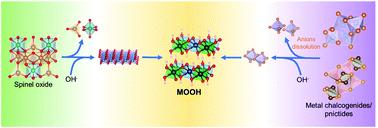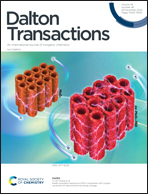The individual role of active sites in bimetallic oxygen evolution reaction catalysts
Abstract
The family of bimetallic oxides, chalcogenides, and pnictides is regarded as a promising and cost-effective oxygen evolution reaction (OER) catalyst compared to noble metals. For practical utilizations, lowering the overpotential and improving the stability of electrocatalysts for the OER are highly important. However, the particular roles of active sites and their surrounding moieties in these catalysts, especially in an aqueous system during the reaction (in situ working conditions), are still ambiguous. Thanks to the well-developed techniques of X-ray diffraction and absorption spectroscopy based on a synchrotron light source, the local structural transformation of these catalysts can be evidently revealed by in situ experiments. Herein, the research on 3d transition metal oxides and chalcogenides used for the OER is enumerated with their corresponding in situ characterization and electrochemical (EC) performances. We generalize the universality of phase transition in the catalysts from the pristine/as-prepared structure to the specific active species during the OER and propose a synergistic effect between the active sites and subsidiary sites on the surface of the catalysts.

- This article is part of the themed collection: 2020 Frontier and Perspective articles


 Please wait while we load your content...
Please wait while we load your content...